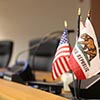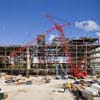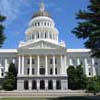Don't Overlook New Requirements Impacting School Facilities under the Local Control Funding Formula

November 2013
Number 81
With all of the attention that has been paid this year to the various impacts of the recent overhaul of the state's finance system for K-12 schools, known as the Local Control Funding Formula ("LCFF"), sometimes overlooked are new responsibilities relating to school facilities. As a primary component of the LCFF, the governing board of each school district must adopt a Local Control Accountability Plan ("LCAP") on or before July 1, 2014, and update it on or before July 1 of each year. (Ed. Code § 52060(a), (b).) An LCAP establishes an accountability model for the school district based on outcomes and achievement of goals related to both state and local priority areas. This means that school districts must work annually towards achieving the goals identified in their respective LCAPs. The State Board of Education is required to adopt a template LCAP by March 31, 2014.
One such state priority that must be included in all school districts' LCAPs is that all school facilities be "maintained in good repair," as specified in Education Code section 17002, subdivision (d)(1). This is an existing good repair standard previously adopted for lower performing schools that emphasizes maintaining facilities as clean, safe, and functional. Therefore, each school district must specify in their LCAP that they will maintain their facilities up to par with the good repair standard, as well as the actions they plan to take within the year to meet this goal. At the same time, the source of funding for this maintenance is not clearly defined, as funds previously earmarked for facilities maintenance - such as through the Deferred Maintenance Program - have been consolidated into the LCFF allocation. At a minimum, school districts must continue to make required deposits into a Routine Restricted Maintenance Account under Education Code sections 17070.75, et seq.
Until regulations come out implementing this aspect of the LCAP, it will remain unclear how schools will be expected to comply with the good repair standard. Until then, school districts will need to engage in budget planning and consider setting aside resources necessary to meet the good repair standard while keeping in mind the broader goals of LCFF, including equity across student groups, local decision-making and stakeholder involvement, accountability, transparency, and alignment of budgeting with accountability plans.
Other requirements under the LCFF may also have an impact on school facilities. LCFF made fundamental changes to how Proposition 98 revenues are allocated to school districts, county offices of education, and charter schools. It altered Class Size Reduction funding both in terms of structure and penalty. As early as 2014, school districts need to be making progress towards achieving an average class enrollment of not more than 24 pupils for each school site in kindergarten and grades 1-3, unless a collectively bargained alternative annual average class enrollment for each school site is negotiated, or face penalties. (Ed. Code § 42238.02(d)(3)(B).) If necessary, school districts should determine the capacity and conditions of their current facilities in order to ensure that they have sufficient and appropriate facilities to provide new classes if needed to achieve smaller class sizes.
If you have any questions regarding facilities maintenance under LCFF or other related issues, please feel free to contact one of our eight offices located statewide. You can also visit our website, follow us on Facebook or Twitter, or download our Client News Brief App.
Number 81
With all of the attention that has been paid this year to the various impacts of the recent overhaul of the state's finance system for K-12 schools, known as the Local Control Funding Formula ("LCFF"), sometimes overlooked are new responsibilities relating to school facilities. As a primary component of the LCFF, the governing board of each school district must adopt a Local Control Accountability Plan ("LCAP") on or before July 1, 2014, and update it on or before July 1 of each year. (Ed. Code § 52060(a), (b).) An LCAP establishes an accountability model for the school district based on outcomes and achievement of goals related to both state and local priority areas. This means that school districts must work annually towards achieving the goals identified in their respective LCAPs. The State Board of Education is required to adopt a template LCAP by March 31, 2014.
One such state priority that must be included in all school districts' LCAPs is that all school facilities be "maintained in good repair," as specified in Education Code section 17002, subdivision (d)(1). This is an existing good repair standard previously adopted for lower performing schools that emphasizes maintaining facilities as clean, safe, and functional. Therefore, each school district must specify in their LCAP that they will maintain their facilities up to par with the good repair standard, as well as the actions they plan to take within the year to meet this goal. At the same time, the source of funding for this maintenance is not clearly defined, as funds previously earmarked for facilities maintenance - such as through the Deferred Maintenance Program - have been consolidated into the LCFF allocation. At a minimum, school districts must continue to make required deposits into a Routine Restricted Maintenance Account under Education Code sections 17070.75, et seq.
Until regulations come out implementing this aspect of the LCAP, it will remain unclear how schools will be expected to comply with the good repair standard. Until then, school districts will need to engage in budget planning and consider setting aside resources necessary to meet the good repair standard while keeping in mind the broader goals of LCFF, including equity across student groups, local decision-making and stakeholder involvement, accountability, transparency, and alignment of budgeting with accountability plans.
Other requirements under the LCFF may also have an impact on school facilities. LCFF made fundamental changes to how Proposition 98 revenues are allocated to school districts, county offices of education, and charter schools. It altered Class Size Reduction funding both in terms of structure and penalty. As early as 2014, school districts need to be making progress towards achieving an average class enrollment of not more than 24 pupils for each school site in kindergarten and grades 1-3, unless a collectively bargained alternative annual average class enrollment for each school site is negotiated, or face penalties. (Ed. Code § 42238.02(d)(3)(B).) If necessary, school districts should determine the capacity and conditions of their current facilities in order to ensure that they have sufficient and appropriate facilities to provide new classes if needed to achieve smaller class sizes.
If you have any questions regarding facilities maintenance under LCFF or other related issues, please feel free to contact one of our eight offices located statewide. You can also visit our website, follow us on Facebook or Twitter, or download our Client News Brief App.
As the information contained herein is necessarily general, its application to a particular set of facts and circumstances may vary. For this reason, this News Brief does not constitute legal advice. We recommend that you consult with your counsel prior to acting on the information contained herein.






